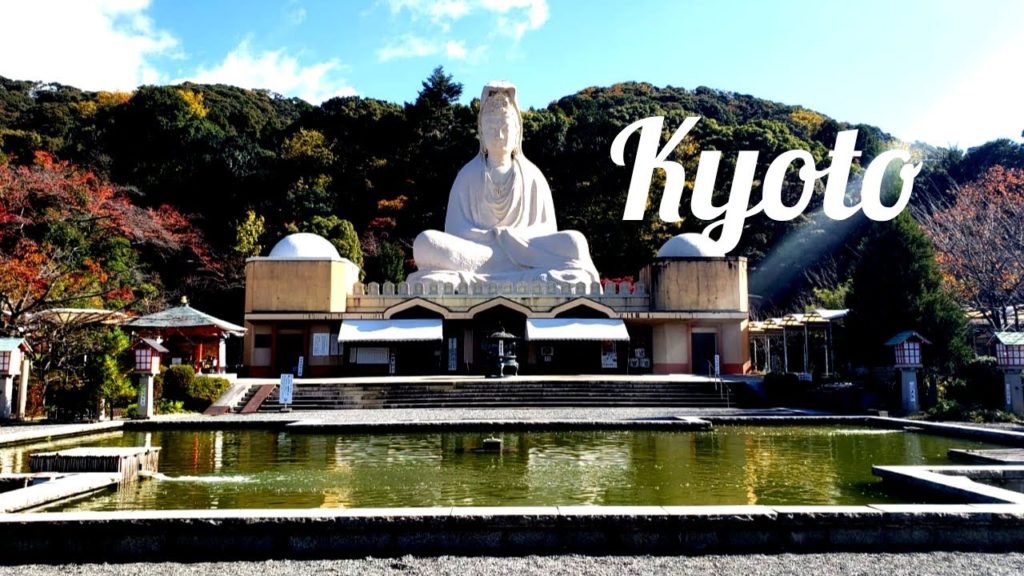Subscribe to our channel for future videos!
00:01 – Higashi Otani Cemetery
01:01 – Ryozen Kannon
01:43 – Nijō Castle
02:50 – Kiyomizudera Temple
Higashi Otani Cemetry
Higashi Honganji, officially known as Shinshū Honbyō, is the mother temple of the Shinshū Ōtani-ha branch of Jōdo Shinshū (Shin Buddhism), whose founder is Shinran (1173-1262).
The image of Shinran is enshrined on the altar in the Founder’s Hall, while that of Amida Buddha is in Amida Hall.
After the death of Shinran, a mausoleum was constructed by his close followers at Ōtani in Kyoto, and his ashes interred there, from which the present Higashi Honganji eventually came into being many years later.
Since then, with tremendous support from its followers, Higashi Honganji has been serving as a spiritual center, where one can encounter the Nenbutsu teaching as clarified by Shinran, so as to discover the meaning of life and to awaken to a true relationship with the Dōbō (those, following the same path).
Through the encounter with his teacher Hōnen (1133-1212), Shinran was able to discover the Nenbutsu Path of the Primal Vow, which transcended life and death, and so overcame suffering and anxiety in his own life.
Therefore, for those of us living in such turbulent times as these, unable to find any meaning in life or a will to live, this teaching is indeed a great light and comfort.
Ryozen Kannon
Ryozen Kannon Temple is a war memorial dedicated to the fallen on both sides of the Pacific War and a moving testament to the futility and loss of life.
The 24-meter concrete image of the Goddess of Mercy was built in 1955 by Japanese construction workers to honor the dead of World War II, both Japanese and Allied soldiers. Visitors can enter the body of the statue to see the enshrined Eleven-headed image of Kannon (the Goddess of Mercy).
Within the precincts of Ryozen Kannon is an altar containing soil from every Allied cemetery from the Pacific theater of World War II.
Ryozen Kannon can be seen as a monument to peace and a counterpoint to the more nationalist Gokoku Shrine nearby, which celebrates and glorifies those who died in wars fighting for the Japanese Emperor.
Nijō Castle
Nijō Castle was built in 1603 as the Kyoto residence of Tokugawa Ieyasu, the first shogun of the Edo Period (1603-1867). His grandson, Iemitsu, completed the castle’s palace buildings 23 years later and further expanded the castle by adding a five story castle keep.
After the Tokugawa Shogunate fell in 1867, Nijo Castle was used as an imperial palace for a while before being donated to the city and opened up to the public as a historic site. Its palace buildings are arguably the best surviving examples of castle palace architecture of Japan’s feudal era, and the castle was designated a UNESCO world heritage site in 1994.
Nijo Castle can be divided into three areas: the Honmaru (main circle of defense), the Ninomaru (secondary circle of defense) and some gardens that encircle the Honmaru and Ninomaru. The entire castle grounds and the Honmaru are surrounded by stone walls and moats.
Kiyomizudera Temple
Kiyomizudera (literally “Pure Water Temple”) is one of the most celebrated temples of Japan. It was founded in 780 on the site of the Otowa Waterfall in the wooded hills east of Kyoto, and derives its name from the fall’s pure waters. The temple was originally associated with the Hosso sect, one of the oldest schools within Japanese Buddhism, but formed its own Kita Hosso sect in 1965.
Kiyomizudera is best known for its wooden stage that juts out from its main hall, 13 meters above the hillside below. The stage affords visitors a nice view of the numerous cherry and maple trees below that erupt in a sea of color in spring and fall, as well as of the city of Kyoto in the distance. The main hall, which together with the stage was built without the use of nails, houses the temple’s primary object of worship, a small statue of the eleven faced, thousand armed Kannon.


AloJapan.com